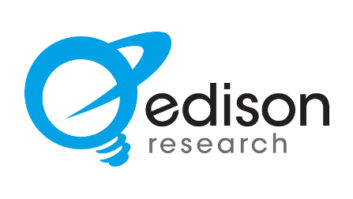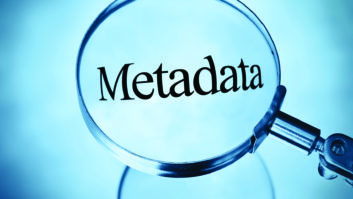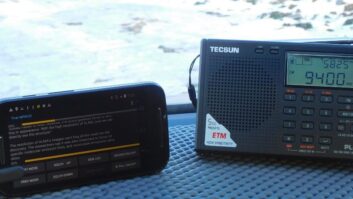How Should Multicast Station Names Appear On the Display?
WASHINGTON The discussion of exactly what U.S. radio listeners should see when they flip the “on” switch on future digital radios has expanded beyond engineers to include programmers and marketers.
It’s a debate that could affect succeeding generations of HD Radio receivers, one that has taken on urgency with the onset of multicasting, under which the number of new channels on the dial could skyrocket. Nevertheless, decisions being discussed may not affect radios before the 2009 OEM model year.
Debate over the display involves balancing desires. Some want new channels to look different than traditional stations on the receiver display; others feel new stations should look similar to their heritage channels. Meanwhile, receiver manufacturers have injected a dose of cold reality into the talks, warning that cost and practicality factor large in their decision-making and in the choices automakers would make.
Members of the National Radio Systems Committee are sifting through display options for multicasting stations on HD Radios. In August, they invited station programmers and marketers to give their input during a demonstration held at NAB headquarters.
Representatives of Delphi, Kenwood, Radiosophy and Boston Acoustics provided engineering prototype receivers for an off-air, one-hour demo of various station multicasting designation possibilities, committee members told Radio World.
Several Washington FMs participated in the demo including non-commercial WAMU and WETA, Howard University station WHUR, Radio One station WMMJ and Clear Channel stations WIHT, WBIG, WMZQ and WWDC.
The idea was to see various displays and tuning schemes and let participants switch back and forth among HD Radio stations, multicast stations and analog stations for discussion purposes.
“This is an issue that surfaced in a technical forum, but it is really a marketing issue,” said Milford Smith, vice president of radio engineering for Greater Media and co-chair of the DAB Subcommittee of the NRSC. The marketers and programmers who were invited, he said, provided valuable input during the meeting.
Designations
Currently, receivers that decode split digital streams designate additional channels by associating them with the main channel. A display might read “WXYZ HD-1,” “WXYZ HD1,” “98.7-1” or “98.7-HD1.” Other displays show the supplemental channel designation within a circle or a square.
A big question is whether the display for supplemental audio channels should remain tied visually to the main channel, a discussion that ventures into format and marketing.
Jeff Marrah, manager of receiver technology for Delphi and co-chair of the task group working on the supplemental audio identification issue, said broadcasters consider the channels to be a “value-added” service and want them to be marketed as something new yet found easily on the dial.
In the first generation of receivers that can tune supplemental channels, a unit tunes to the main station first, then to the supplemental audio channels in order: WXYZ’s main digital station; then to WXYZ HD1, which is the first supplemental after the main HD station; then WXYZ HD2 and so on.
For a station with formats on the additional channels that are in some way related to the format of the main channel, this display scheme works. But some programmers want to have a distinct, separate way of identifying the supplemental channels.
Dave Wilson, liaison between the Consumer Electronics Association and the task group, said the committee is looking at a new numbering approach, one that would give consumers the illusion of a new band for the “new” stations, as well as variations of the current numbering scheme.
Using this method, the listener would not see the radio tuning to the main and then supplemental channels; the listener would see only the supplemental designation appear on the display.
In the new numbering scheme, 88 MHz to 108 MHz becomes 200.1 to 299.7 for the supplemental channels. For example, the supplemental digital channels for a station on 88.1 would appear as 200.1, 200.2 and so on.
Proponents say this approach gives radio the chance to have the appearance of a completely “digital” band. But this also raises the question of whether and how to list stations that remain analog, sources said.
How radio receivers acquire the signals of the new channels, how fast that happens and how the tuning is affected by whether the user is tuning up or down, are factors under review.
Radio tuning or scanning is straightforward going up the dial; the receiver tunes the stations in order, first the main and then the supplemental channels in order.
Engineering prototype HD Radios were used in the multicast station ID demo including models by:
(click thumbnail)Boston Acoustics
(click thumbnail)Delphi
(click thumbnail)Kenwood
(click thumbnail)Radiosophy
Coming back down the dial, Wilson said, logically you’d want the receiver to tune to the channels in the reverse order, beginning with WXYZ HD2, WXYZ HD1 and then the main WXYZ. “But the receiver has to tune to the main (channel) first, find the others and then go backwards,” he said. “Would the delay while it’s been doing that be objectionable for listeners?”
Acquisition times in the demos at NAB, with multicast tuning as currently implemented in the prototypes, were roughly 5 seconds. That length of time would vary depending on the make of receiver and reception characteristics, committee sources said. Most described the delay as not onerous.
However, the delay would not be eliminated in the new band approach and could be lengthier without the analog backup, said a receiver maker.
Smith said most manufacturers provide an indication on the display, such as the word “Linking,” while the radio is tuning so a user knows something is happening during the wait. This becomes more important in instances when the radio does not automatically blend to analog.
When the digital signals are split, the first HD Radio signal has a backup analog signal no matter the bit rate, Smith said. But subsequent channels do not; they remain digital.
When an all-digital signal is lost, the receiver mutes, like a satellite receiver does, one manufacturer said. The unit stays on that channel until the signal is reacquired or the user tunes away. When this happens on Delphi products, “No Signal” is indicated on the display.
The task group is looking at situations under which a digital signal has analog backup and how that factors into signal acquisition.
No frustrations
Yet while various tuner displays can distinguish HD Radio stations, any future changes must be balanced against cost considerations for receiver manufacturers. Getting HD Radios in cars is critical to generate volume digital receiver sales, experts believe.
OEM receiver makers are stressing the importance of keeping costs down because automakers can veto radio features.
An auto company executive knows the selling price of a new car before it’s built, Marrah said. That executive is given budgets for materials and labor.
“He’s asking, ‘What’s going to help me sell that car?’ If he doesn’t perceive that (a new feature) will help bring people into dealerships, he won’t spend a penny on that,” Marrah said.
The group also is taking into account the amount of space on the radio to display text, especially important in an OEM design, and it doesn’t want to obsolete radios already in the market that are able to decode multiple digital signals.
Above all, industry experts say, they want any display scheme to be simple for the user.
“Break their understanding, and all you do is frustrate them,” according to one receiver manufacturer, who said the last thing the task group wants is to force users to have to look at the manual to figure out how to tune to the multicast stations on HD Radios.
Confusion is a notable issue for OEM receiver makers because a driver’s main focus is supposed to be the road.
“The challenge is … when the customers are confused, they don’t just bring the radio back. They bring the entire car back,” said Marrah.
In these cases, while auto dealers are paid to swap out an old radio for a different one, the receiver maker and the auto manufacturer pay the added costs of the new radio and labor, he said.
“The price of failure is much higher when you get into the OEM market.”
Some broadcasters like the idea of a special button dedicated to the supplemental channels. Receiver makers believe OEMs are unlikely to find this cost-effective.
Buttons on the radio are expensive and the “real estate” is dear, committee sources said, adding that there are priorities “higher than HD Radio” when it comes to retooling a button for that purpose.
An OEM receiver maker who did not attend reportedly told at least one participant that getting an extra button for the supplemental digital channels was “about as likely as getting a second steering wheel in the car,” several sources said.
For real?
Several receiver manufacturer representatives on the NRSC told Radio World they hope automakers will become excited about installing HD Radios in vehicles and adopt the multicasting feature.
Multicast Station DisplaysIs one of these examples the style in which your station name will appear on future radios?
WXYZ HD-1
WXYZ HD1
98.7-1
98.7-HD(1)
WXYZ1
In August, Ibiquity Digital, Greater Media, Boston Acoustics and Radiosophy took part in a media display of the available HD Radios in Detroit in an effort to show automakers that HD Radio “is for real,” as one source put it.
No clear timeline is in place for when the task group would turn findings over to the DAB Subcommittee or what form they would take. Results would not be seen in HD Radio multicast receivers until approximately the 2009 OEM model year, participants said; OEM makers have indicated they have completed 2008 designs.
Some wonder if this discussion isn’t too late, thinking that by 2009 users will have become used to multicast tuning as it is today.
“Uncertainty about what is happening in this whole debate makes automakers hesitate. It behooves us to decide a path and go forward,” one source said.
Approximately 60 people participated in the discussion at NAB, Smith said. The programmers and marketers represented radio groups that are members of NRSC. They were asked to fill out and return surveys on the topic. Whether those would be made public was unknown, Smith said.
Photos by David Layer
















